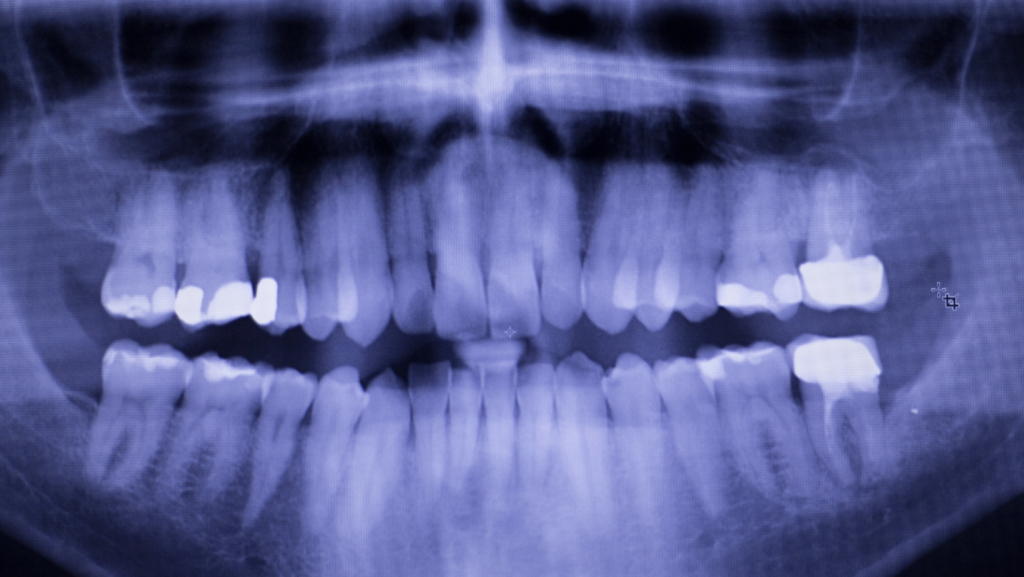Menu
Dental Fillings
Dental Fillings In Lafayette, La
Tooth decay tunnels down into the tissue of the teeth in what is called a dental cavity. Dental cavities are usually caused by infrequent brushing and poor dental hygiene, but some people are also more genetically predisposed to getting frequent cavities. Even if you take amazing care of your teeth there is a chance that you may one day get a cavity.
Dental fillings are now easier and more effectively used than ever thanks to modern dental practices. Dr. Toups has the technology, tools, and specialized staff to perform the best dental fillings in Lafayette, La and surrounding Acadiana areas.
What Is A Filling?
Dental fillings are restorative materials used to repair teeth damaged from cavities by treating the tiny holes in the enamel of decayed, broken, or damaged teeth. Fillings prevent further damage and restore the shape, function, and strength of the damaged tooth. The durability of fillings depends on the material used.
Statistically, fillings are more common in the molars (back teeth) where decay rates are higher.
Fillings are the best way to preserve the natural teeth which have been affected by tooth decay. Sometimes the tooth is damaged by infection and when that happens, a root canal is required.

Signs You Need A Filling
Here are a few of the common signs that you may need a filling. Remember, that you could need a dental filling even if you are not experiencing any of these signs. Only a dentist will be able to tell you what you need.
- Tooth sensitivity to hot or cold drinks
- Visible cavity on the enamel
- Toothache or pain when biting or chewing
- Rough or uneven tooth surfaces
Composite Dental Fillings
Our office uses composite fillings. Their natural appearance and the ease with which they may be matched to the color of natural teeth. Composite fillings resist the development of cavities and can withstand moderate pressure caused by the constant stress of chewing.
Benefits:
Less Invasive Procedure: Other dental filling procedures need significant space-creation for implantation, which may involve drilling away large tooth portions. The invasive drilling leads to a weakened tooth structure and possible extended chipping and breaking.
Composite fillings alleviate this issue because the procedure needs light drilling when creating a bonding surface. When bonded with the natural tooth, it forms an outer protective shell that protects the sensitive areas, preventing further tooth damage.
Quick Hardening and Bonding: After placing the filling on the teeth, dentists shine a unique light on the filling, which helps it to harden, thus lessening the bonding time. The reduced bonding time means the procedure is completed in a short period and can be completed in a single visit to the dentist.
Composite filling procedures result in shortened dental appointments because tooth drilling takes a short period. Other filling procedures take more time.
They Are Versatile: Unlike amalgam fillings, composite fillings have a wide range of dental applications. They are used in restorative and cosmetic dental procedures. For instance, they are the go-to solution for fixing cavities, dental cracks, and chipped teeth. They are also ideal for closing gaps between two teeth.
They Strengthen The Tooth Structure: Decayed teeth usually lose some of their structural durability and longevity. Composite fillings bond to the original tooth structure, thus providing added tooth support. Once the bonding material hardens, it results in solid teeth that can withstand added pressure.
Reduced Tooth Sensitivity: Tooth sensitivity worsens the more the tooth is damaged, which makes taking hot or cold food and beverages unbearable. Composite fillings help to alleviate this problem because the resin bonds with the tooth, insulating it against fluctuating temperatures.
However, dental patients with new composite fillings may still experience mild sensitivity, which subsides over time.
Composite Filling Material Can Is Repairable: Composite fillings will eventually degrade due to wear or accidental damage. The good news is that they are easily repairable via a simple procedure, bringing your smile back. All your dentist has to do is clean the affected area and reapply the composite.
What's The Fillings Process?
- The dentist completely numbs the area with anesthesia.
- The dentist removes the tooth decay and damaged portion of the tooth.
- Composite material is used to fill the gap from the missing tooth.
- The dentist then hardens the composite to the teeth for a permanent bond.
- Enjoy a pain-free and cavity-free set of teeth again!

Statistics About Fillings:
- According to the Centers for Disease Control and Prevention (CDC) 91% of adults between the ages of 20 and 64 have dental decay
- Over 40% of children age 2-11 have cavities according to the National Institute of Health (NIH)
- 1 in 5 adults over the age of 65 have tooth decay
- Nearly 175 million dental fillings are placed every year according to the American Dental Association (ADA)
Replacing Old Fillings
If you have a silver filling and would like to replace it, that is always an option. Many people are doing this. Silver fillings are not particularly pleasing to the eye, and we know they ultimately result in a weaker tooth structure because they react to heat. As the metal heats and cools, it expands and retracts to create new pockets for bacteria to enter
With composite fillings, they don’t react to heat like traditional silver fillings and are just as strong. Composite fillings are actually bonded to the tooth structure, Instead of being held in place by mechanical retention like silver fillings. With age, the metal of a silver filling expands, contracts, and may split or crack the surrounding tooth structure.
FAQs
Here are some of the most frequently asked questions we have about dental fillings.
Modern patients prefer tooth-colored fillings. Some old metal fillings (Amalgam Fillings) have mercury within them which is why patients sometimes opt to replace their old silver fillings with tooth-colored ones. The composite material used for tooth-colored fillings looks better and performs better than metal fillings.
When you get a filling, the area around the infected tooth is numbed. You shouldn’t feel anything for an hour or two after your appointment, but once the numbing wears off, it’s normal to feel pain in your teeth and gums.
It’s common to experience pain when drinking or eating anything hot or cold. It is also not uncommon to feel pain or greater than usual sensitivity when you brush or floss near the infected tooth. Over the counter Ibuprofen will work on any sensitivity or pain you may experience.
With proper dental care and oral hygiene habits, your filling should last anywhere between 5-15 years.
There are several types of materials used for teeth fillings, including gold, porcelain, silver amalgam (an alloy consisting of mercury mixed with silver, tin, zinc, and copper), tooth-colored plastic, composite resin, and glass ionomer. We use tooth-colored, composite fillings.
Schedule An Appointment
To schedule an appointment or consultation please fill the form and we’ll get back to you as soon as possible. Alternatively, you are welcome to give us a call or send us an email and we’ll be happy to answer all your questions
